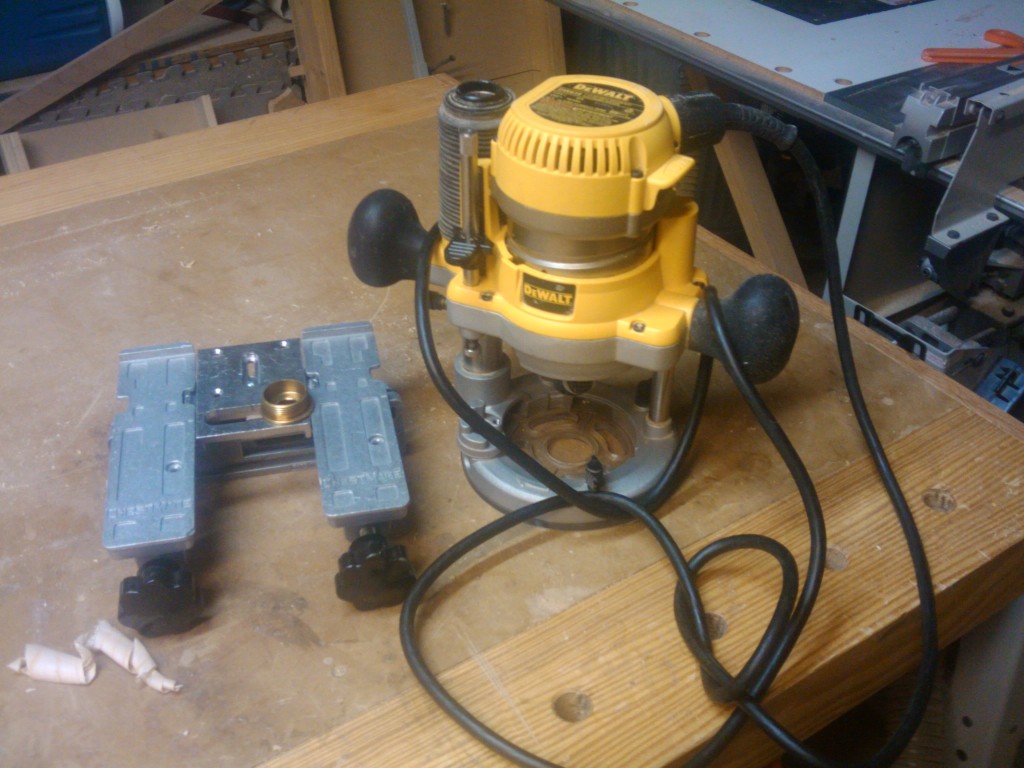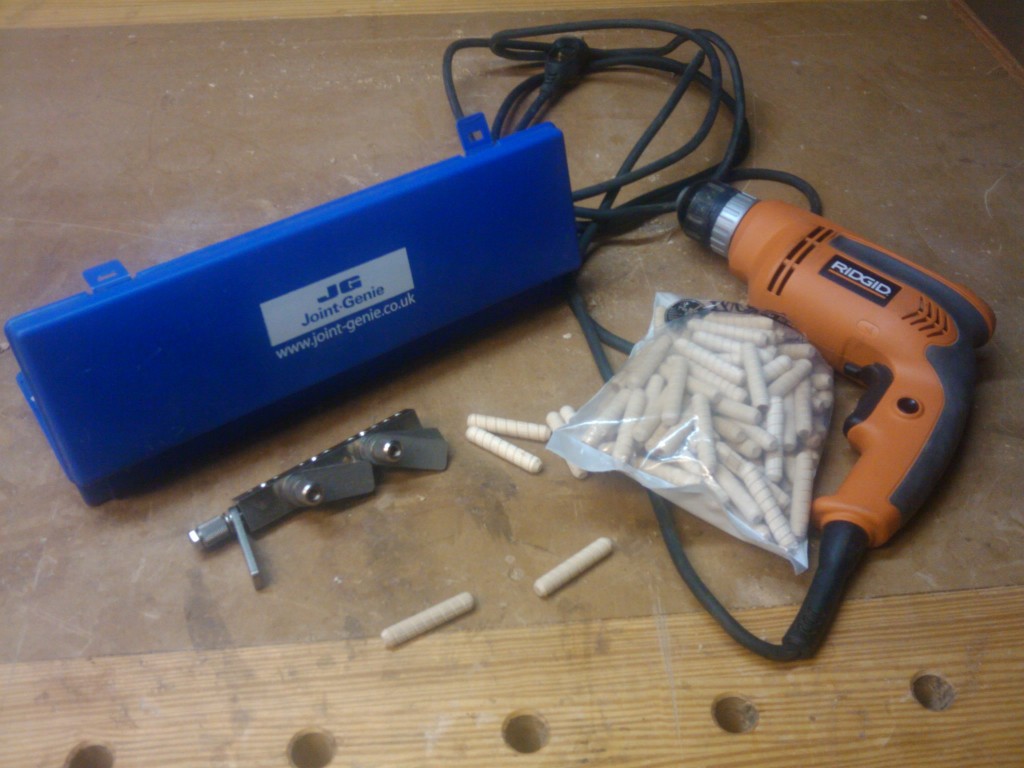OK, so I’m getting ready to build this bookshelf project for a co-worker of mine, but I’m having a big time internal debate with myself. The design is fine, and the client is excited to get started on the project.
But, I am torn. You see, I have been giving the joinery on the frames a lot of thought. You see, each side is going to be a four-sided frame that will be 18 inches wide at the bottom tapering to 12 inches at the top. There will be four pieces on each of the sides – a 90 degree back upright, two rails and an angled front stretcher. Each shelf unit will have two frames, and there are two bookshelf units in this build, making a total of 16 joints.
What I’m having trouble deciding is how to join these joints. I am trying to choose between a mortise and tenon joint and a dowel joint.
In this corner, there’s the mortise and tenon team. My plan – if I choose to go this route, is to cut mortises into the cross rails at the top and the bottom of the piece. I have a Prazi Chestmate jig with the special mortising template inserted, and I would need to use a plunge router with a 5/8″ guide bushing and a 3/8″ up spiral bit to plow the mortises. I would also need to cut tenons on both ends of the uprights – 90 degree tenons on both ends of the back rails and angled tenons on both ends of the front rails. Probably using the nibbling technique on my table saw. I would cut them a little thick and plane them to final size with a shoulder plane to sneak up on the perfect fit.
Working in favor of the mortise and tenon is the tradition of the joint. It’s a stout joint for this kind of application, giving lots of glue area. Against? Well, it’s a bit more complicated to do this kind of joint especially with the angled tenon to fit into the mortise. There’s also a bit of fussing to get the size of the tenon perfect – I have (on more occasions than I care to count) cut the tenon too thick to start, and then pushed it to too thin. Grrr…..
In this corner is the dowel team. Here I would use my corded drill and my Joint Genie doweling jig to precisely drill for three 3/8 inch, 2 inch long spiral dowels per joint. Bippity, boppity boo, and I’m done with all 16 joints in probably less than an hour. Using this method, I could ignore the angles – drilling at 90 degrees to the edge of the top and bottom rails and 90 degrees to the mating surface of the uprights. The 3/8″ dowels would be the same width of the tenon I was planning on cutting. It’s another traditional joint that I have seen used for some heavy-duty joinery by Norm Abram and James Krenov.
The downside of dowels I have heard time and again is that they aren’t a heavy-duty kind of joint. There have been some Wile E. Coyote-type tests done to demonstrate the strength of dowel joints vs. that of mortise and tenon joints. The testers used strain meters, bathroom scales and other high-end technical tools to measure the failure point of each joinery method. And, their results – expressed in foot-pounds, newton-meters or some other measurement scale – show results that are all over the place. Heck, the earliest I have seen this debate was back in an October 1979 edition of Popular Science, where they basically claimed that the two joints are at a dead heat.
While I’m making up my mind, I’d be interested in hearing what your thoughts are on the topic…



On these tests, I always try and look at the end numbers. While joint A might be stronger then joint B, if the final numbers for both still come out above what is required for the application, then use whatever you want. Also, I would go with your gut. You have enough experience to know what works. Choose it and get to building.
Jonathan
============================
Tom,
Do you have a picture of the design? I think that if you use enough dowels, the joint will certainly be strong enough to support a load of books. The one thing I may be concerned with is the ability of the joint to withstand normal stress (in-line with the dowel). These forces would be applied when the bookcase is pushed or pulled from the top or bottom, trying to rack the bookcase and lever it apart.
Chris
I’ve found that the dowel joints do not stand up to racking very well. I’ve seldom seen mortise and tenon chairs fail, but I’ve seen more than a few dowel chairs fail. So if these bookcases will be pushed or pulled around, (which is what eventually happens to all the book cases in my house), then I would feel more secure with the mortise and tenon….
I suppose if you go way overkill on the dowels then it may not make an appreciable difference, but the amount of work and cost of dowels may make a difference to you.
The mortise & tenon is probably the safer bet.
And with your talent level, it’s a walk in the park for you.
But on the other hand, if the dowel joinery will be strong enough in your opinion to do the trick, then I’d say the only decision left is do you want to spend the extra time on the M & t?
(meaning compensation analysis for the two different methods.)
Either way, I’m sure your co-worker will love it!
Thanks Tom.
Which one pushes your talents more? Pick that one.
Sounds like a perfect job for a Festool Domino – the best of both worlds.
Oh, you HAD to go there!